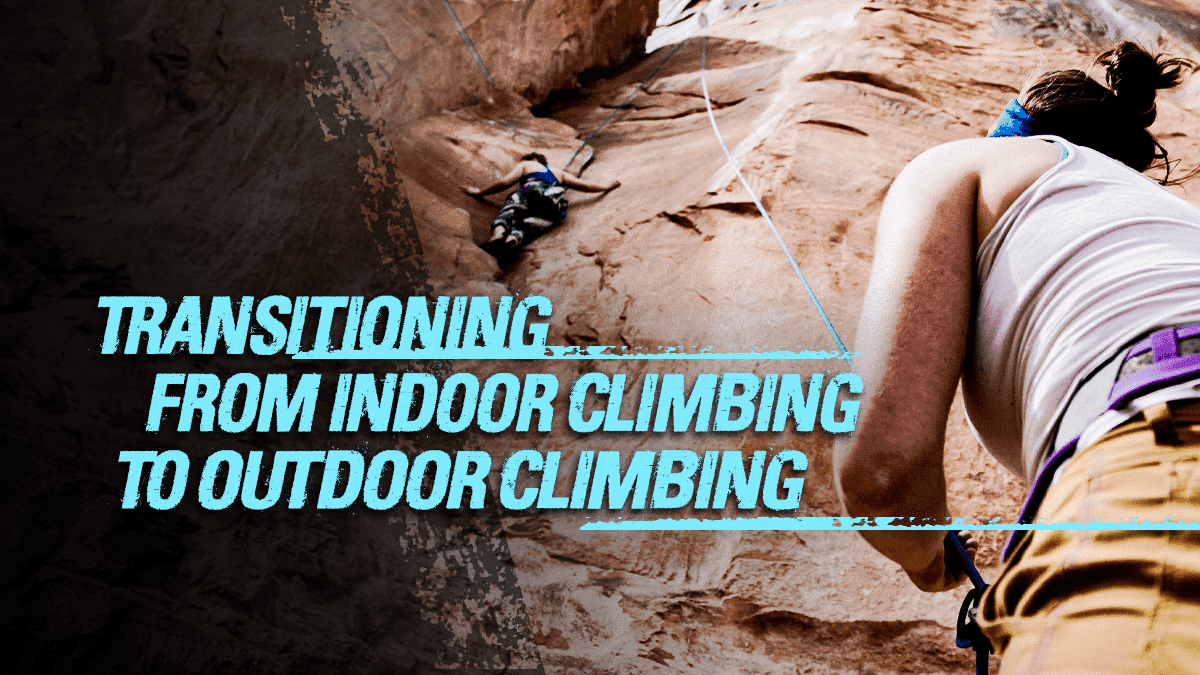Transitioning from Indoor Climbing to Outdoor Climbing

As the leaves change and pumpkin spice fills the shelves, climbers can only think of one thing: sending temperatures! Fall is finally here, which means that outdoor climbing is right around the corner. Each season of outdoor climbing poses its own unique challenges. It can be challenging to get motivated to climb in the snow and ice of winter, spring comes with great temps, but often unreliable weather, and summer brings that unbearable heat. Fall is one of the best times of the year to get outside to rock climb. After a long and grueling summer of training, you are rewarded with better temps, low humidity, and beautiful scenery! So how can you be sure that you are ready for fall climbing? We are here to give you three essential tips to keep in mind as you transition from indoor to outdoor rock climbing.
Manage Your Expectations
First, and most importantly, climbers must learn to manage their expectations as they transition from indoor to outdoor climbing. Whether it is your first season climbing outdoors or your 10th, you cannot expect to immediately climb at your gym level outdoors. While indoor and outdoor climbing are related, there are important differences between them. Outdoor climbing is condition-dependent, utilizes unfamiliar hold textures and shapes, is often difficult to read, and incorporates a unique fear factor. So be sure to set your expectations accordingly. Try giving yourself several acclimation days if you are transitioning to outdoor climbing or even to a new area outdoors. During these acclimation days, your goal should not necessarily be to send but instead to get on as many new routes or boulder problems as possible. This simple shift in mindset for the first couple of outdoor sessions can set you up for an incredible season!

Focus on Sequencing
As we mentioned above, one key difference between indoor and outdoor climbing is that outdoor climbs are often difficult to read. Clearly, you cannot rely on hold or tape colors to guide you through an outdoor climb. But more importantly, often, when you climb outdoors, every foot and handhold in reach is fair game! This means that you have to make many important decisions about your sequence. As the outdoor climbing season approaches, try to incorporate sequencing drills into your gym climbing sessions to prepare for this. Sequencing drills require that a climber think closely about the body positions, handholds, and footholds they use when climbing. Give this one a try and let us know if it helped:
Sequencing Drill: Video Beta
1) Pick a boulder problem about two grades below your redpoint or the hardest grade you can climb
2) Set a timer for 3 minutes and sequence the climb thoroughly. Start with which hand holds you will use, then footholds, then body positions when moving between holds,and finally run through the entire climb with your eyes closed.
3) Position your phone so that it captures the entire climb and then record yourself climbing.
4) Rest for 3 minutes. Meanwhile, review the tape and figure out if you stuck to the sequence or if you changed things mid-climb. Take note of those changes.
5) Record yourself climbing the boulder problem again. Try to use the exact same beta from your previous video.
6) Compare the videos! How did you do? What unexpected things did you not sequence originally?
7) Perform this drill on three different climbs.
Check the Conditions
Lastly, when you are transitioning to outdoor climbing you have to check the conditions. Knowing the temperature and whether or not it will rain is a good start, but take note of the humidity, the air quality (especially at the tail end of fire season), and the wind. All of these factors will play a huge role in your success. If it is especially windy, maybe stay low to the ground and boulder for the day. If the humidity is high, try running laps on easier routes instead of projecting. Conditions can make or break a climbing day, so learn how to read them and adjust your plan accordingly. Fall is one of the most exciting times of the year for rock climbers. To get the most out of your season, make sure to take the proper precautions!




